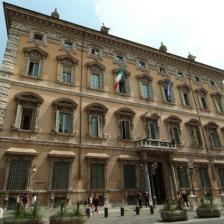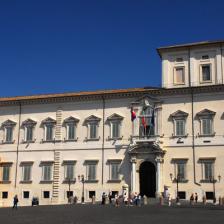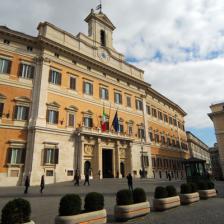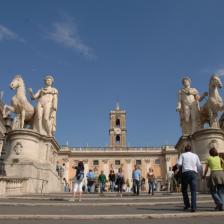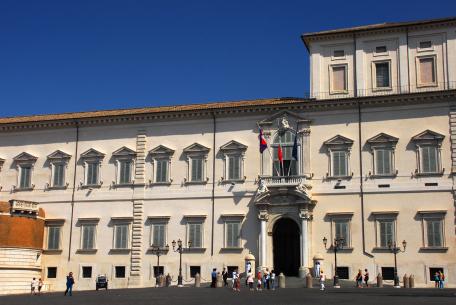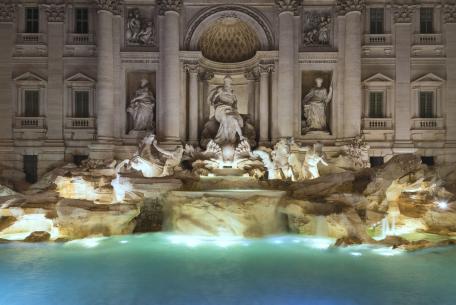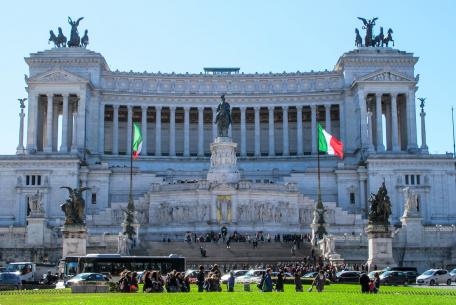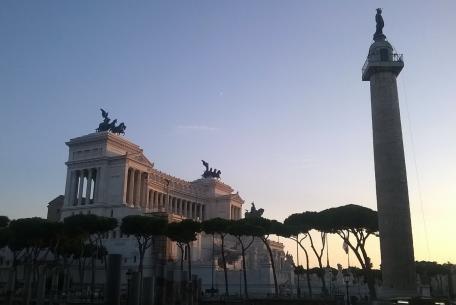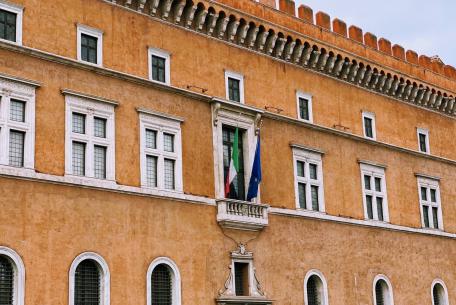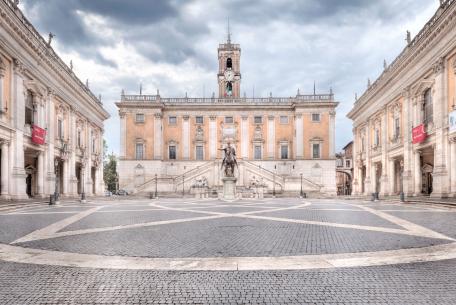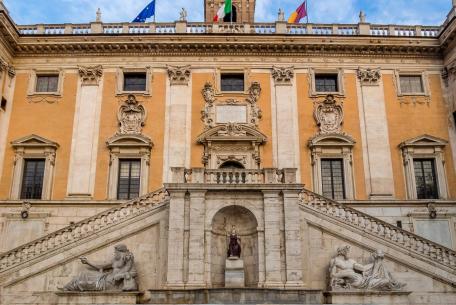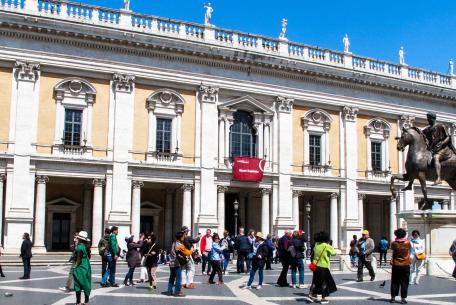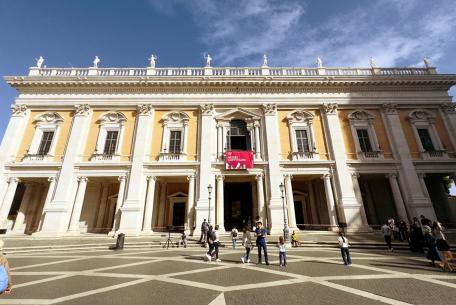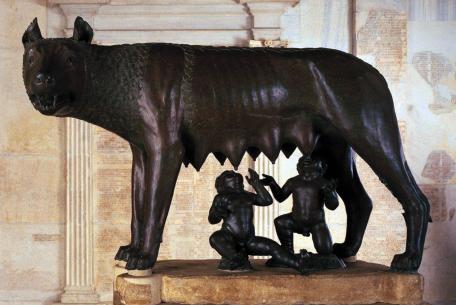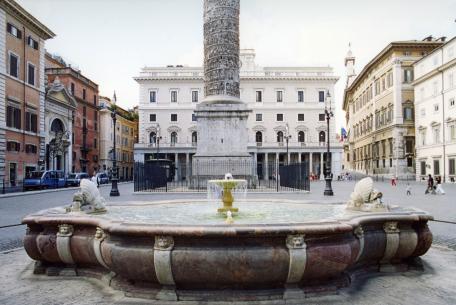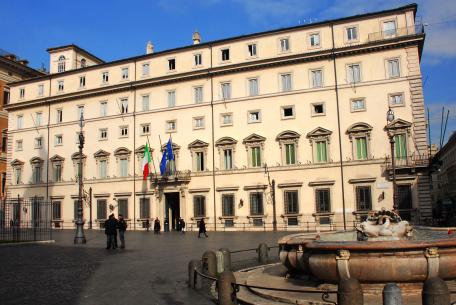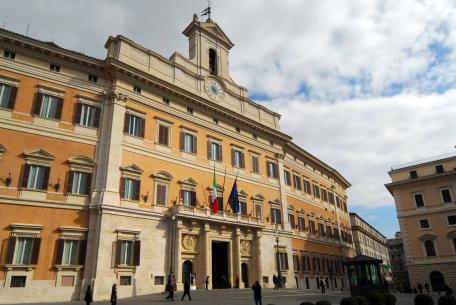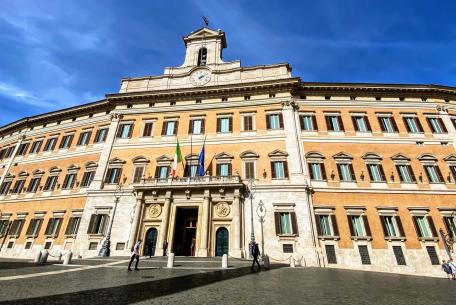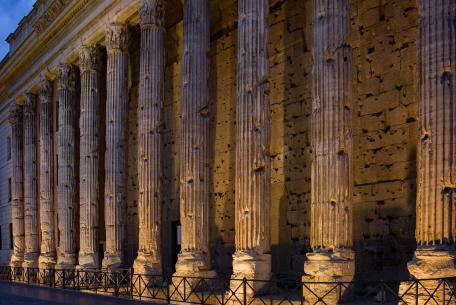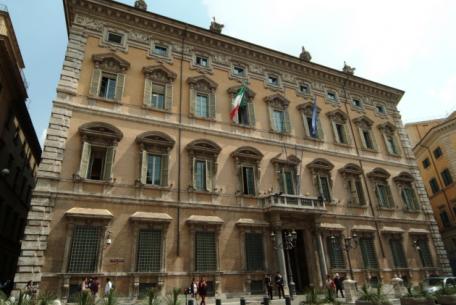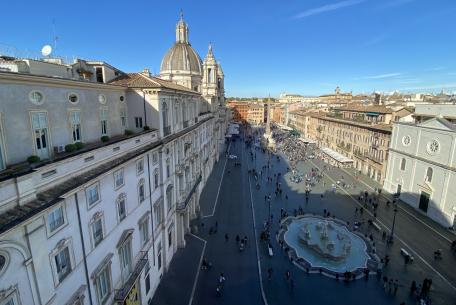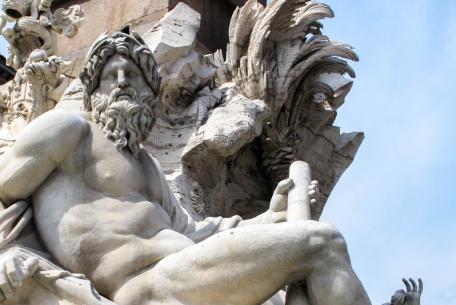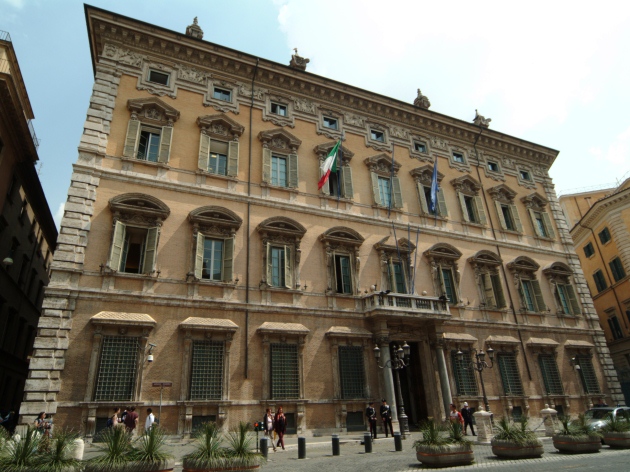
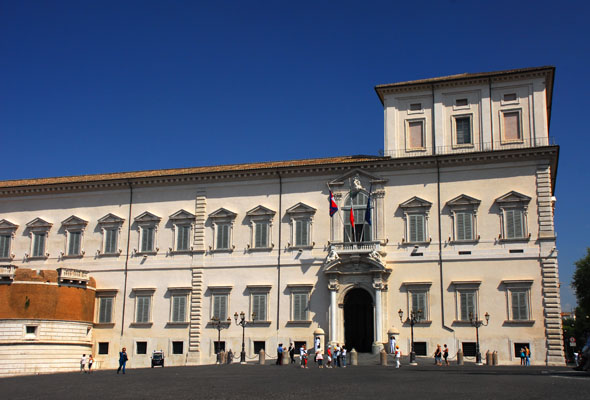
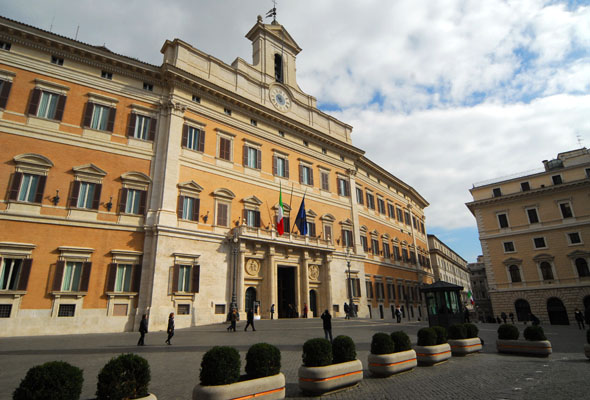
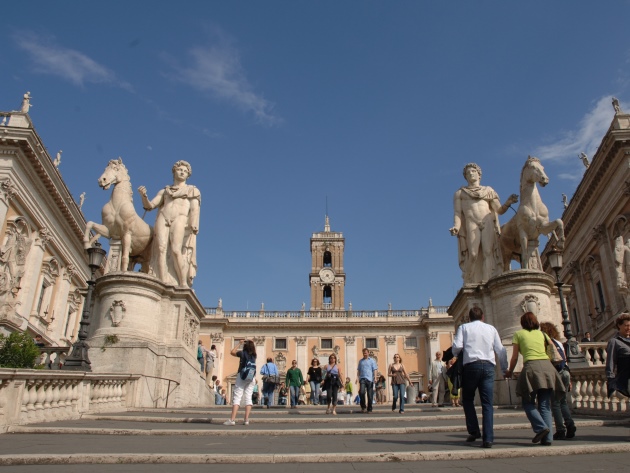
Once the capital of the Roman Empire, then of the Papal State, today of the Italian Republic, Rome is where you feel the atmosphere of the great history.
Walking in its squares and its streets, you discover its historic buildings. These architectural jewels with precious works of art are the sites where the political and institutional life of the country has been taking place for centuries.
Our itinerary starts from Piazza del Quirinale, where the Palace of the same name is located. It is a symbol of the Italian Republic life and, since 1946, the seat of the Presidency of the Republic. The majestic building, the work by Domenico Fontana, Carlo Maderno, and Gian Lorenzo Bernini, was the summer residence of the popes for over three centuries and then the home of the kings of Italy. Inside, it houses magnificent art collections consisting of statues, ancient and modern paintings, tapestries, carriages, clocks, and porcelain.
A stone's throw away is the famous Trevi Fountain, firmly fixed in the eternal collective imagination by Fellini's film "La dolce vita".
With a short walk, you arrive in Piazza Venezia. After a souvenir photo in front of the Vittoriano, the monument to Vittorio Emanuele II, also known by the nicknames of "typewriter" and "wedding cake", you admire the splendid Palazzo Venezia. Imposing Pope Paul II Barbo 15th-century residence, today a national museum, this building brings to mind the black and white images of many historical films. Here, the crowd listened to the Fascist Leader Benito Mussolini speaking from the balcony.
You are right next to the Capitol, the symbolic hill of Rome. As the political and religious centre of ancient Rome, it represented the emblem of the autonomy of the Roman people against the power of the Church during the medieval period. This splendid square, a Michelangelo's masterpiece, is delimited by Palazzo Senatorio - the seat of the Municipality of Rome - Palazzo dei Conservatori and Palazzo Nuovo, which house the collections of the Capitoline Museums. You can take the opportunity to visit the museum's masterpieces, such as the original Marcus Aurelius, the She-wolf, the dying Galata, the Capitoline Venus. If you want to admire one of the most suggestive views of the city, do not forget to have a coffee at the Caffarelli Terrace.
Going back toward Via del Corso, you reach Piazza Colonna, embellished with numerous historic buildings. Here, in front of the two-thousand-year-old Column of Marcus Aurelius, stands Palazzo Chigi, the seat of the Presidency of the Council of Ministers since 1961. The history of the palace spans more than three centuries, starting from the mid-16th century: it was the private residence of relevant families of papal Rome, then the Spanish and Austro-Hungarian embassy at the Quirinale. Its interiors are rich with sumptuously furnished rooms, famous paintings, and beautiful decorations.
A few steps and we arrive in Piazza di Monte Citorio, where we find the palace of the same name, seat, since 1871, of the Chamber of Deputies. Initially conceived on a project by Gian Lorenzo Bernini, later modified by Carlo Fontana, the building was enlarged in the early 1900s by Ernesto Basile. Among its various rooms, the hemicycle debating chamber, the "Transatlantic" - the corridor that runs alongside the debating chamber - and the Sala della Lupa stand out.
It's time for a break: a cocktail in one of the bars in the nearby Piazza di Pietra. It is a small gem suspended in time, concealed between buildings and overlooked by the Temple of Hadrian.
Let's walk towards Palazzo Madama, the seat of the Senate of the Italian Republic. The Palace has a Baroque facade, a 17th-century masterpiece, and interiors rich in decorated ceilings and friezes. It was the Roman residence of the Medici family. It owes its name to the widow of Duke Alessandro de 'Medici, Margherita of Austria, the famous "Madama" who received the palace in usufruct by Clement VII.
Not to be missed a visit to the spectacular Piazza Navona, to enjoy its elegant and lively atmosphere, and admire the wonderful works of art of the great masters of the Baroque: the church of Sant'Agnese in Agone, completed by Borromini, Palazzo Pamphilj, by Girolamo Rinaldi, the Fountain of the Moro and the Fountain of Neptune, both by Giacomo Della Porta, and the imposing Fountain of the Four Rivers by Gian Lorenzo Bernini.
 Condividi
Condividi












































